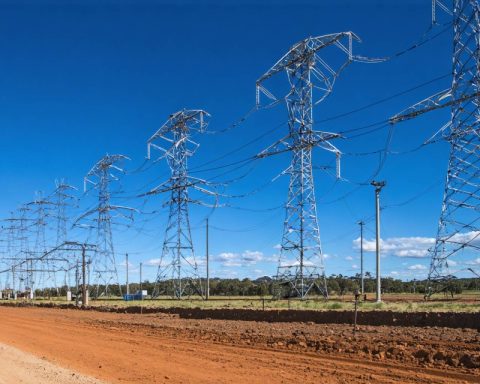The renowned delivery giant, UPS, is currently facing a tough climate, as market conditions force a shift in strategy. Overcapacity in the small package delivery sector has been squeezing UPS’s pricing power amid an economic slowdown, prompting customers to hunt for budget-friendly delivery options. This scenario has inevitably led to a disappointing 2024 earnings outlook for the company, diverging from earlier expectations.
Pressure from Interest Rates
The burden of high interest rates has extended beyond UPS’s sales performance, impacting its operational structure. CEO Carol Tome has implemented the “better not bigger” mantra, emphasising quality over quantity and prioritising strategic deliveries over sheer volume expansion. This strategy is crucial for UPS’s ability to remain competitive in its market. Influenced by cyclical trends, lower interest rates would likely reignite package volume, offering UPS a vital resurgence as demand increases.
The Road to Balancing Overcapacity
During the pandemic, delivery companies expanded rapidly to meet soaring demand, resulting in market overcapacity. With 2024 showing an excessive average daily volume, UPS is making strategic cuts where needed. Lower interest rates, however, promise to bolster business activity and consumer expenditure, accelerating demand growth, and driving a return to premium delivery options.
A Strategic Return in 2025?
Forecasting 2025, a decreased interest rate landscape could allow UPS to realign with its fundamental strategy, enhancing its financial performance. The focus will pivot back to targeted, high-margin segments, notably in SMBs and healthcare. With significant cost reductions underway, including a $1 billion saving achieved through strategic layoffs, UPS aims to optimise its operations through automation, propelling network efficiency.
In a potential lower-rate environment, UPS stands to reclaim its pricing leverage, encouraging a profit trajectory amplified by strategic investments and streamlined operations. While uncertainties persist, UPS offers promising future growth prospects on its upswing.
Smart Strategies for Package Deliveries: Tips and Interesting Insights
In the ever-evolving world of package deliveries, companies are constantly adjusting their strategies to navigate economic challenges and optimise operations. As seen with UPS’s current adjustments, there’s much to learn and apply both as a consumer and a business owner. Here, we provide useful tips, life hacks, and fascinating facts about the delivery sector that may enhance your understanding and approach to this dynamic field.
Optimise Your Shipping Costs
One of the most valuable lessons from current market trends is the importance of optimising shipping costs, whether you’re a business owner or a regular consumer. Consider the following strategies:
– Consolidate Shipments: If you’re frequently sending packages, bundling shipments can help save on costs. This method reduces the number of separate deliveries and may qualify you for bulk shipping discounts.
– Flexible Delivery Dates: Opt for flexible delivery options if time sensitivity isn’t a priority. This can be significantly cheaper and also more environmentally friendly.
– Compare Shipping Providers: Always compare services offered by different companies. While UPS is a major player, exploring alternatives such as FedEx, DHL, or local providers might yield cheaper options. Check each company’s main domain, such as FedEx or DHL, for their services and offers.
Leverage Technology and Automation
Businesses can learn from UPS’s increasing focus on automation as a means to cut costs and enhance efficiency:
– Use Automated Systems: Implement automated logistics systems to streamline order fulfilment, reduce human errors, and save time. Tools like inventory management software can keep your operations running smoothly.
– Track and Optimise Routes: Utilise GPS and route optimisation software to improve delivery efficiency. This not only saves fuel costs but also speeds up delivery times.
Consider Environmental Impact
Incorporating sustainability can improve your business’s public image and bottom line:
– Eco-Friendly Packaging: Use recyclable materials and reduce excessive packaging. Customers appreciate eco-conscious choices, and it aligns with global environmental goals.
– Offset Carbon Emissions: Some companies provide options to offset carbon emissions. This is an attractive feature for environmentally conscious consumers.
Interesting Facts About the Delivery Industry
– Seasonal Peaks: The package delivery industry experiences significant volume spikes during holidays and sales events. Be prepared for longer delivery times during these periods.
– Drone Deliveries on the Rise: Some companies are exploring drone deliveries as a solution to congestion and to reach remote areas quickly. Although still in the testing phase, it’s a glimpse into the future of logistics.
As the delivery industry continues to navigate challenges, both providers and consumers can leverage these insights to stay ahead. Whether you’re sending packages or refining logistics for a business, understanding and adapting to market trends will be your key to success.











